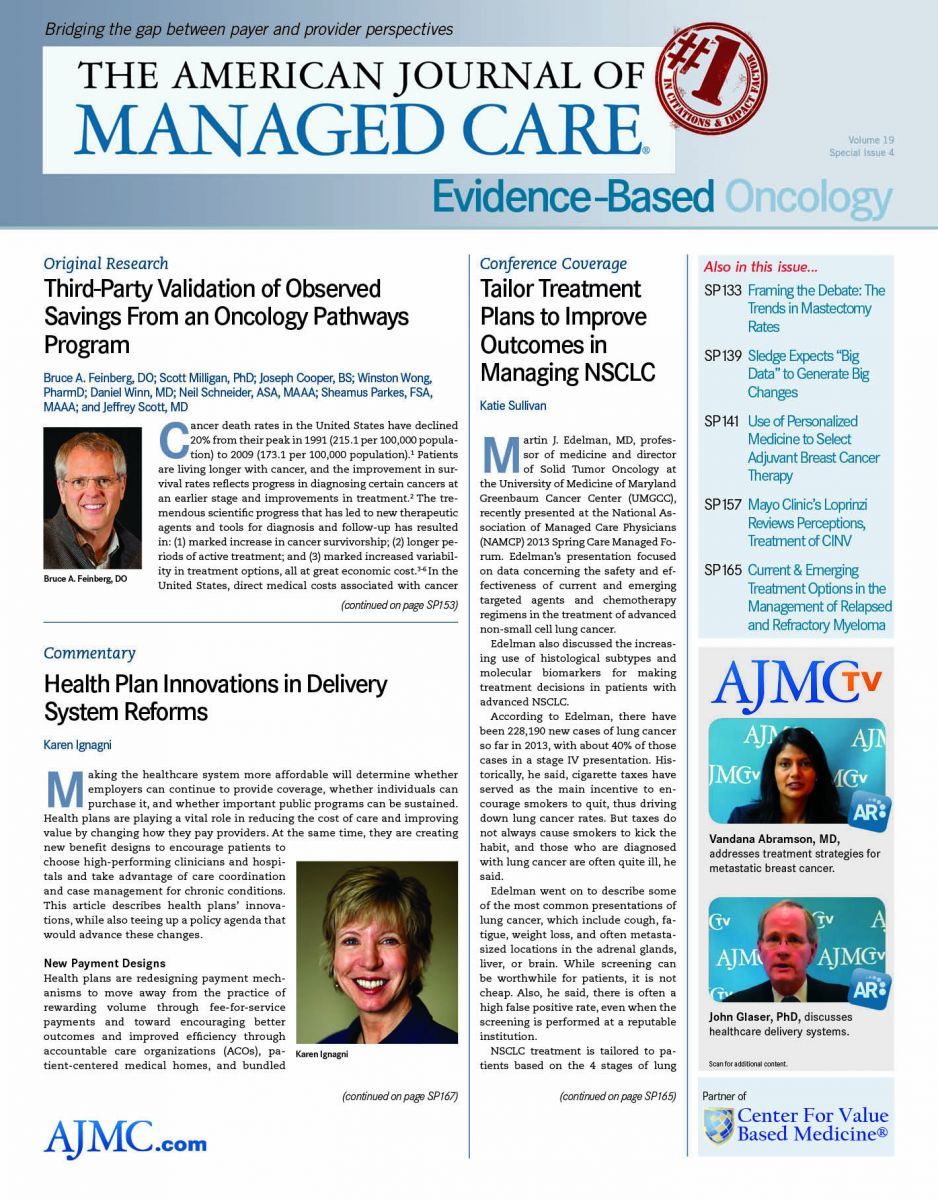- Center on Health Equity & Access
- Clinical
- Health Care Cost
- Health Care Delivery
- Insurance
- Policy
- Technology
- Value-Based Care
Framing the Debate: The Trends in Mastectomy Rates
Following publication in 1990 of the National Institutes of Health (NIH) consensus statement recommending breast-conservation surgery as the preferred surgical treatment for the majority of women with stage I and stage II breast cancer,1 several studies have confirmed similar long-term survival rates of breast-conservationtherapy compared with mastectomy 18 to 20 years postoperatively, although these studies present conflicting results as to whether breastconservation therapy is associated with increased local relapse rates.2-4
The results of this collective research and the NIH Consensus Statement led to a steady decline in mastectomy rates in the United States for women with stage I or stage II disease receiving surgery5,6—from a 1988 pre-consensus statement rate of 77%, to a rate of 38% in 2004.6 National databases, such as Surveillance, Epidemiology, and End Results (SEER), can provide an overall picture of mastectomy procedures performed in the United States. The most recent publication of mastectomy rates from the SEER database presents data through 2008 for women with T1-2 N0-3 M0 tumors who had surgery (either breast-conservation surgery or mastectomy). 7 Mastectomy rates steadily decreased from 2001 to 2005, from a high of 40.2% to a nadir of 35.6%. Following this, mastectomy rates began to rise from 2005 through 2008, back up to 38.4%, the highest rate since 2002.
A publication of mastectomy rates from the European Society of Breast Cancer Specialists suggests that this trend observed here is distinct from trends in mastectomy rates in Europe.8 In this study, mastectomy rates were analyzed from 2003 to 2010 from >15,000 women throughout Italy, Belgium, Germany, and Switzerland who underwent surgery for early-stage disease. Investigators reported that rates steadily declined from a high of 29.9% in 2005 to only 18.6% in 2010.
There are both desirable and undesirable explanations for an increasing mastectomy rate. Examples of positive reasons include improvements in the radiographic identification of occult lesions and an increase in the identification of genetic risk factors for aggressive disease (eg, BRCA mutations). Undesirable reasons for increasing mastectomy rates include an unsubstantiated worry about recurrence, an overestimation of the survival benefit of mastectomy, and a general lack of knowledge about the available surgical choices. Additional reasons include improved postmastectomy reconstructive outcomes and a desire to avoid the side effects of adjuvant radiation therapy.
Another crucial factor in judging the significance of an increasing mastectomy rate is the distinction between mastectomy performed therapeutically on the primary tumor and that performed on the contralateral breast as a prophylactic measure. An analysis of records from >150,000 women with stage I-III disease from the SEER database demonstrated that contralateral prophylactic mastectomy rates have increased from 4.2% in 1998 among women already receiving therapeutic mastectomy to 11.0% in 2003.9 Most recently, a large, populationbased study of women with early-stage breast cancer treated with lumpectomy and radiation found that women who chose the breast-conserving option had both better disease-specific and overall survival compared with their mastectomy counterparts.10
1. Treatment of Early-Stage Breast Cancer. NIH Consens Statement Online 1990 Jun 18-21;8(6):1-19.
2. Fisher B, Anderson S, Bryant J, et al. Twentyyear follow-up of a randomized trial comparing total mastectomy, lumpectomy, and lumpectomy plus irradiation for the treatment of invasive breast cancer. N Engl J Med. 2002;347(16):1233-1241.
3. Veronesi U, Cascinelli N, Mariani L, et al. Twenty-year follow-up of a randomized study comparing breast-conserving surgery with radical mastectomy for early breast cancer. N Engl J Med. 2002;347(16):1227-1232.
4. Poggi MM, Danforth DN, Sciuto LC, et al.Eighteen-year results in the treatment of early breast carcinoma with mastectomy versus breast conservation therapy: the National Cancer InstituteRandomized Trial. Cancer. 2003;98(4):697-702.
5. Lazovich D, Solomon CC, Thomas DB, et al. Breast conservation therapy in the United States following the 1990 National Institutes of Health Consensus Development Conference on the treatment of patients with early stage invasive breast carcinoma. Cancer. 1999;86(4):628-637.
6. Freedman RA, He Y, Winer EP, et al. Trends in racial and age disparitiesin definitive local therapy of early-stage breast cancer. J Clin Oncol. 2009;27(5):713-719.
7. Mahmood U, Hanlon AL, Koshy M, et al. Increasing national mastectomy rates for the treatment of early stage breast cancer [published online November 8, 2012]. Ann Surg Oncol. doi:10.1245/s10434-012-2732-5.
8. Garcia-Etienne CA, Tomatis M, Heil J, et al. Mastectomy trends for early-stage breast cancer: a report from the EUSOMA multi-institutional European database. Eur J Cancer. 2012;48(13):1947-1956.

Trends in Hospital Pricing for Vulnerable Emergency Department Users, 2021-2023
December 4th 2025Self-pay emergency department prices rose significantly from 2021 to 2023, especially at for-profit and system-affiliated hospitals, highlighting growing affordability challenges for uninsured and underinsured patients.
Read More
Integrated Care for Chronic Conditions: A Randomized Care Management Trial
December 3rd 2025The authors sought to understand the differential impact of payer-led community-based care management approaches on stakeholder-oriented outcomes for publicly insured adults with multiple chronic conditions.
Read More

